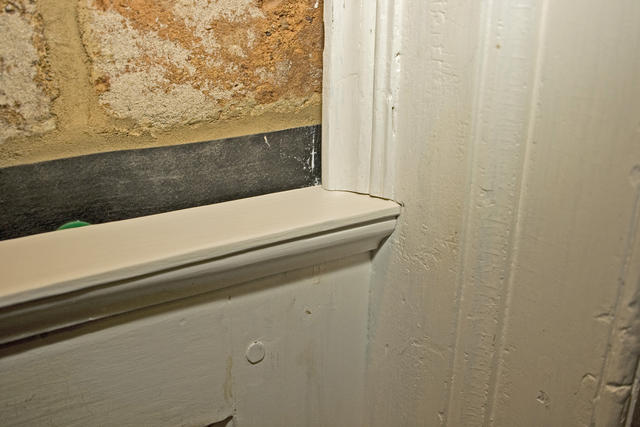
Fortunately, the answer to this question was found by looking closely at the third, and perhaps most important, piece of information available to the Team; the reused doorframes themselves. After inspecting the doorways a large piece of molded backband was discovered missing from the lower leg of one of the frames. The Restoration Team knew that the missing backband could relate to where the paneling in the South Passage butted against the door frame. This in turn would provide clear evidence that the doorframe belonged in the South Passage. However there was a major problem with the missing piece of backband; it was approximately a foot shorter than the height of the South Passage's paneling. At first the research team thought that the doorframe must have simply been cut down. However, after it was removed it became clear that the bottom of the door frame had never been altered. So what was the cause of the ghost being too low on the doorway?

©The Montpelier Foundation
|
|
The junction of the South Passage's paneling with the southeastern door frame. The interruption in the backband caused by the paneling's cap proved to be a major piece of evidence that helped to determine which of the ca. 1764 doorways should be reinstalled in the opening. |







